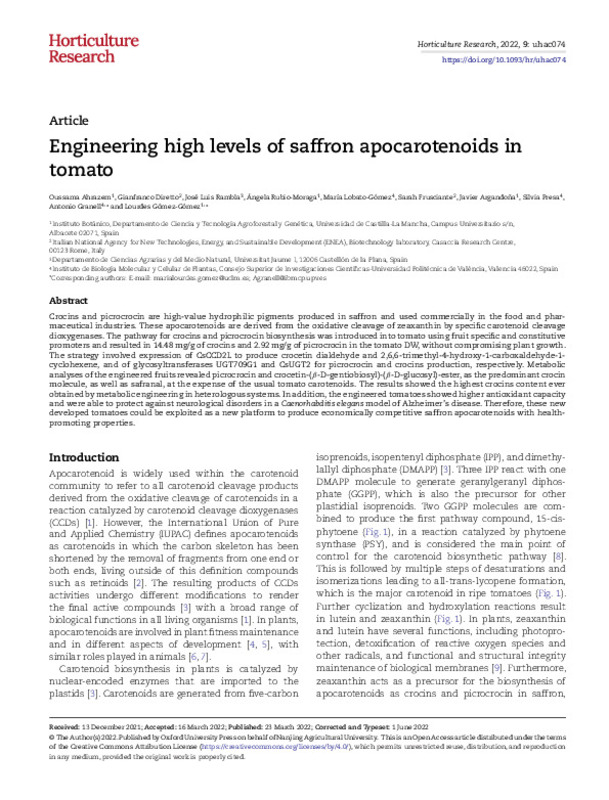JavaScript is disabled for your browser. Some features of this site may not work without it.
Buscar en RiuNet
Listar
Mi cuenta
Estadísticas
Ayuda RiuNet
Admin. UPV
Engineering high levels of saffron apocarotenoids in tomato
Mostrar el registro completo del ítem
Ahrazem, O.; Diretto, G.; Rambla Nebot, JL.; Rubio-Moraga, Á.; Lobato-Gómez, M.; Frusciante, S.; Argandoña, J.... (2022). Engineering high levels of saffron apocarotenoids in tomato. Horticulture Research. 9:1-13. https://doi.org/10.1093/hr/uhac074
Por favor, use este identificador para citar o enlazar este ítem: http://hdl.handle.net/10251/193067
Ficheros en el ítem
Metadatos del ítem
| Título: | Engineering high levels of saffron apocarotenoids in tomato | |
| Autor: | Ahrazem, Oussama Diretto, Gianfranco Rubio-Moraga, Ángela Lobato-Gómez, María Frusciante, Sarah Argandoña, Javier Gómez-Gómez, Lourdes | |
| Fecha difusión: |
|
|
| Resumen: |
[EN] Crocins and picrocrocin are high-value hydrophilic pigments produced in saffron and used commercially in the food and pharmaceutical industries. These apocarotenoids are derived from the oxidative cleavage of zeaxanthin ...[+]
|
|
| Derechos de uso: | Reconocimiento (by) | |
| Fuente: |
|
|
| DOI: |
|
|
| Editorial: |
|
|
| Versión del editor: | https://doi.org/10.1093/hr/uhac074 | |
| Código del Proyecto: |
...[+] |
|
| Agradecimientos: |
This work was supported by grants BIO2016-77000-R from the Spanish Ministerio de Ciencia, Innovacion y Uni-versidades and SBPLY/17/180501/000234 from the Junta de Comunidades de Castilla-La Mancha (co-financed European ...[+]
|
|
| Tipo: |
|









